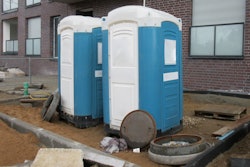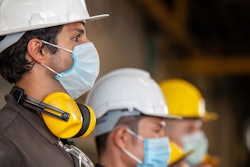
As New York City prepares to reopen, the Building and Construction Trades Council of Greater New York (BCTC) and the Building Trades Employers’ Association (BTEA) have reached an agreement that creates the framework necessary to remobilize the city’s construction industry.
With over 100,000 unionized construction workers in New York City, and many thousands of other workers in a supervisory or supply chain role, remobilizing the construction industry will prime New York’s economy as the state grapples with the economic fallout associated with the COVID-19 pandemic. According to the New York Building Congress, $61.5 billion worth of construction was put in place in New York City in 2019. That number was expected to grow to $65.9 billion in 2020.
With two million New Yorkers out of work and the economy continuing to struggle amidst the economic and health crisis, major public-infrastructure projects have been viewed as a possible stimulus to the state economy. The remobilization plan will ensure that shovel-ready projects can begin immediately, while maintaining a heightened level of confidence in worksite safety.
Putting Safety Protocols in Place
The plan reached by the BCTC, BTEA, and in conjunction with the Real Estate Board of New York (REBNY), provides for both safety protocols and temporary adjustments between BCTC locals and construction managers in order to promote efficiency and safety with reduced worker density. It is framed by three guiding principles:
- The health and wellness of the construction workforce must always remain the foremost priority that informs efforts to remobilize construction in NYC.
- Remobilization must be accomplished with deliberate action that will mitigate exposure to workers and the public.
- Each construction site is unique in its size and complexity, and as such sufficient flexibility is necessary to accommodate job site characteristics, while also setting a standard that all job sites must meet.
Prior to reaching agreement on the plan, the BCTC and BTEA, along with REBNY, worked in close collaboration with the Cuomo administration to establish the health and safety protocols for construction worksites during the COVID-19 public health emergency. These protocols include requirements for PPE, social distancing, health screenings, increased washing stations, frequent cleaning and disinfection and other measures which can be found in more detail here.
The remobilization plan set forth by this agreement advances these health and safety protocols and applies them to all union construction sites as they begin to reopen. The plan also requires face coverings to be worn at all times on union construction sites and ensures the protocols included in the pact will be strictly implemented to protect the health and safety of workers.
“First and foremost, the safety of our members, and of all construction workers, must be the priority of any plan that remobilizes the construction industry,” said Gary LaBarbera, president of the Building and Construction Trades Council of Greater New York. “We’re confident the agreement we’ve reached in collaboration with union contractors and the real estate community meets this threshold. The Building Trades have always been leaders when it comes to worksite safety and helping New York recover in the wake of the city’s most challenging moments. This time around will be no different.”
Key to the remobilization plan is reducing worker density on construction sites. The agreement outlines a variety of creative measures to reduce worker density while maintaining productivity, including employing staggered start times, shift work and other alternative work schedules. Implementation of these ideas to reduce worker density will require the cooperation of the City of New York.
In addition, the agreement mandates that construction management must prepare sites to ensure compliance with the Health and Wellness Protocols developed by the BCTC, BTEA, and the state guidelines, before increasing worksite capacity. This includes identifying areas where workers will stage at the beginning of their shifts and six foot distances must be marked out; installing OSHA and CDC signage across the worksite; and establishing entrance and exit points on some sites, where reconfiguration and new exit gates might be required.
To ensure compliance with the health and wellness protocols in the remobilization plan, the BCTC and BTEA have formed an oversight committee that will closely monitor on-the-ground activity. The oversight committee, which includes REBNY, will also review any submissions by construction managers on projects that have uncertain status as to essential or non-essential designation, or projects that may have been stalled due to the pandemic.
Ensuring a Safe Boost to NYC Economy
“With New York City in the beginning stages of reopening, this agreement provides the heightened health and safety protocols necessary to begin reactivating construction sites across the city,” said Louis J. Coletti, president and CEO of the Building Trades Employers’ Association. “Real estate is the backbone of New York, and as such, creating safe worksites that allow New Yorkers to get back to work will supply the economic injection that we need.”
“The challenge ahead is to show that New York City can rebound economically in a healthy and robust manner. The agreement between BCTC and BTEA sets the stage for such a recovery,” said James Whelan, President of the Real Estate Board of New York. “Construction and large-scale infrastructure projects will be critical to creating jobs and housing and accumulating much-needed tax-revenue for the city. This remobilization plan will facilitate such projects in a healthy, swift and responsible manner.”
















